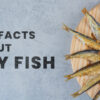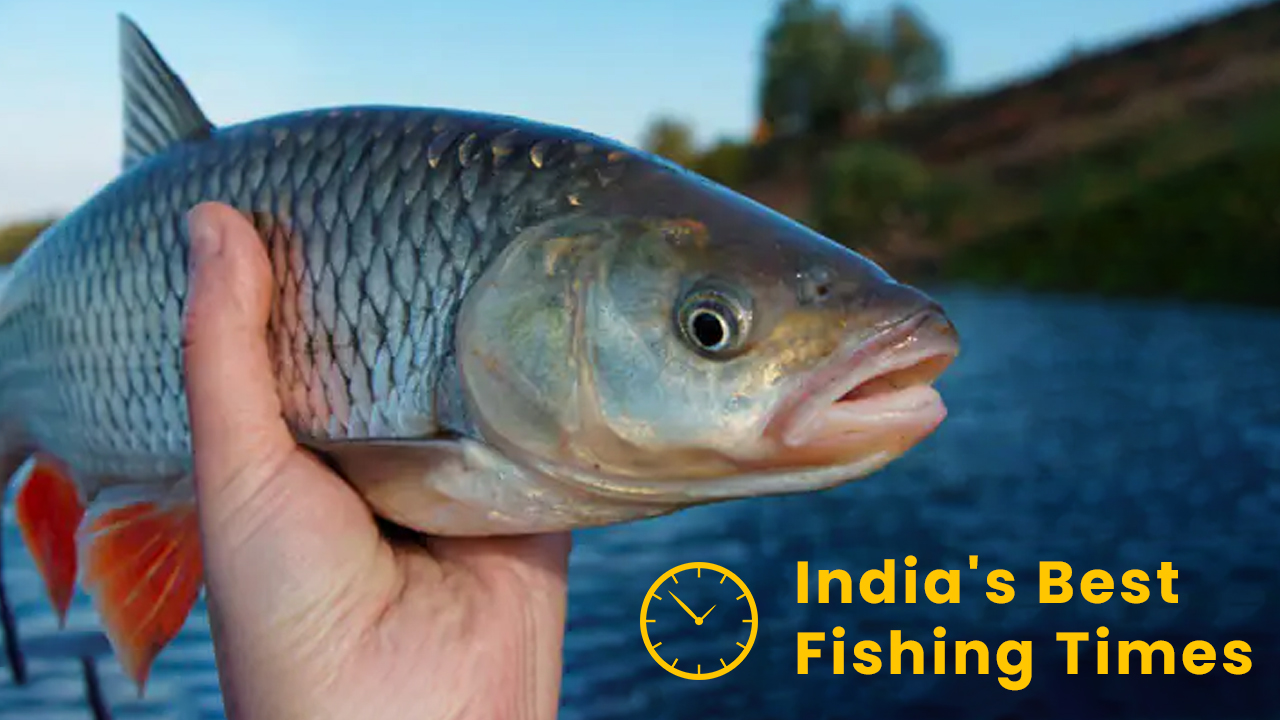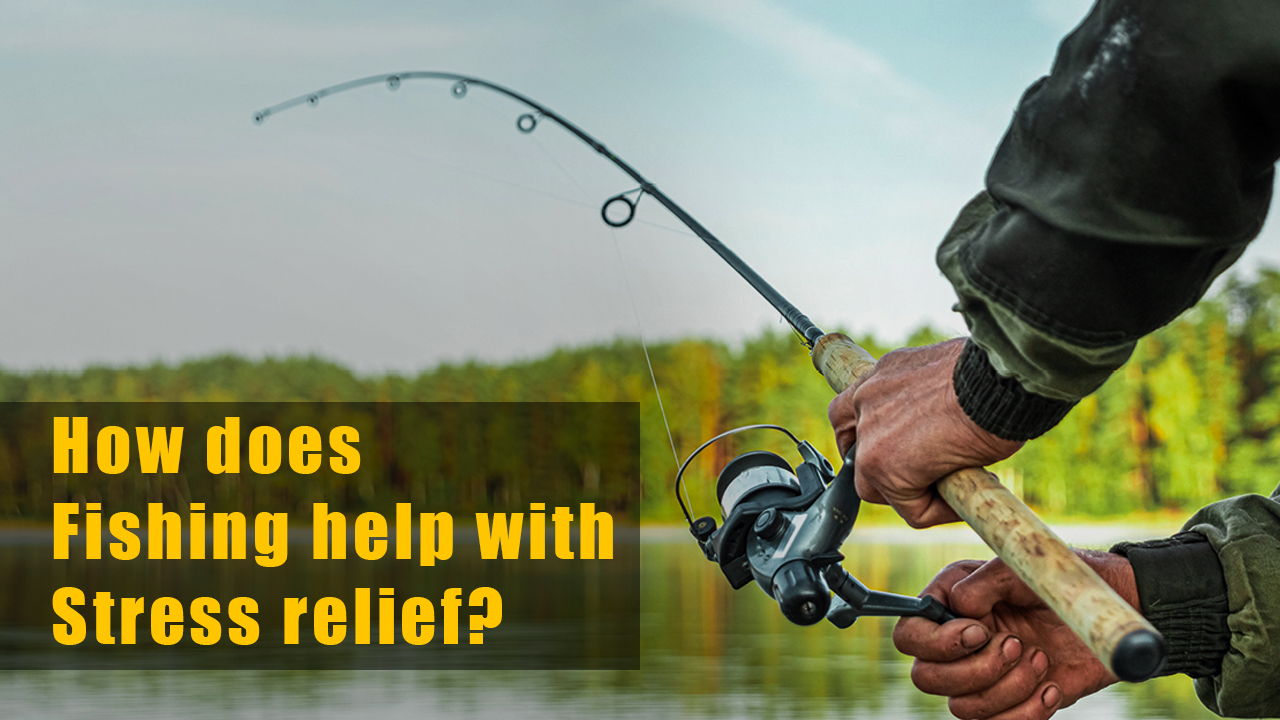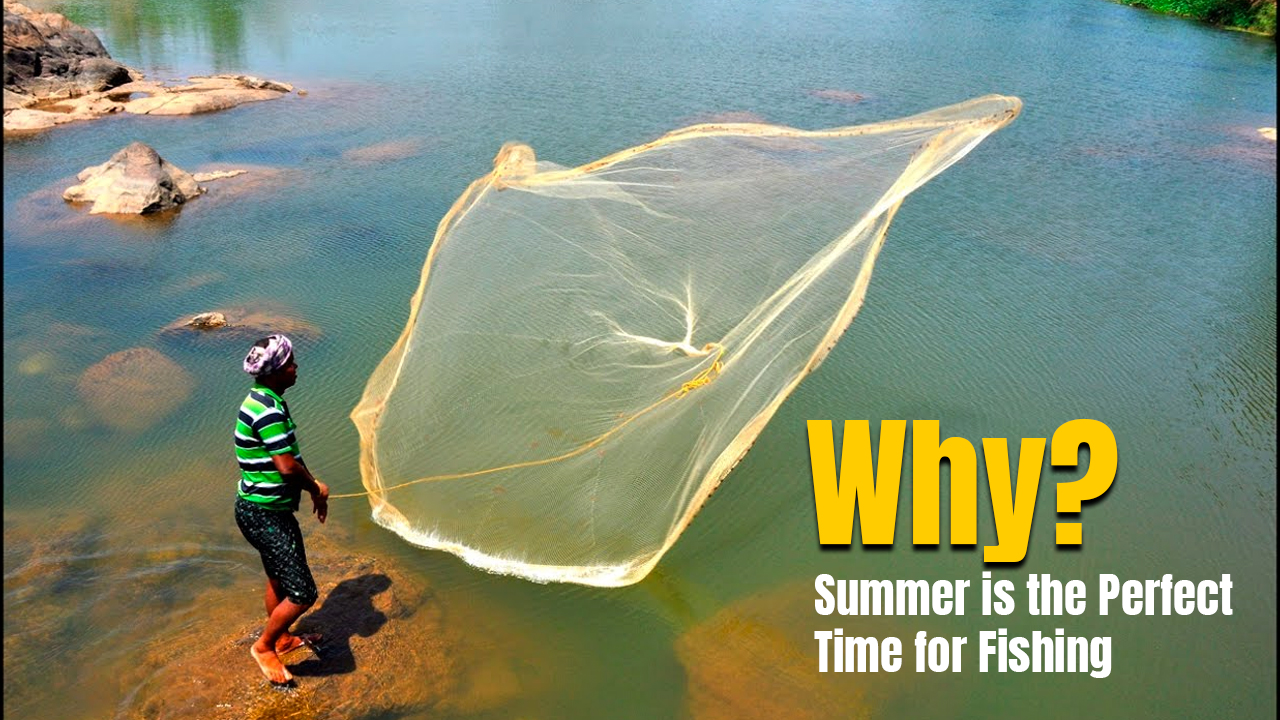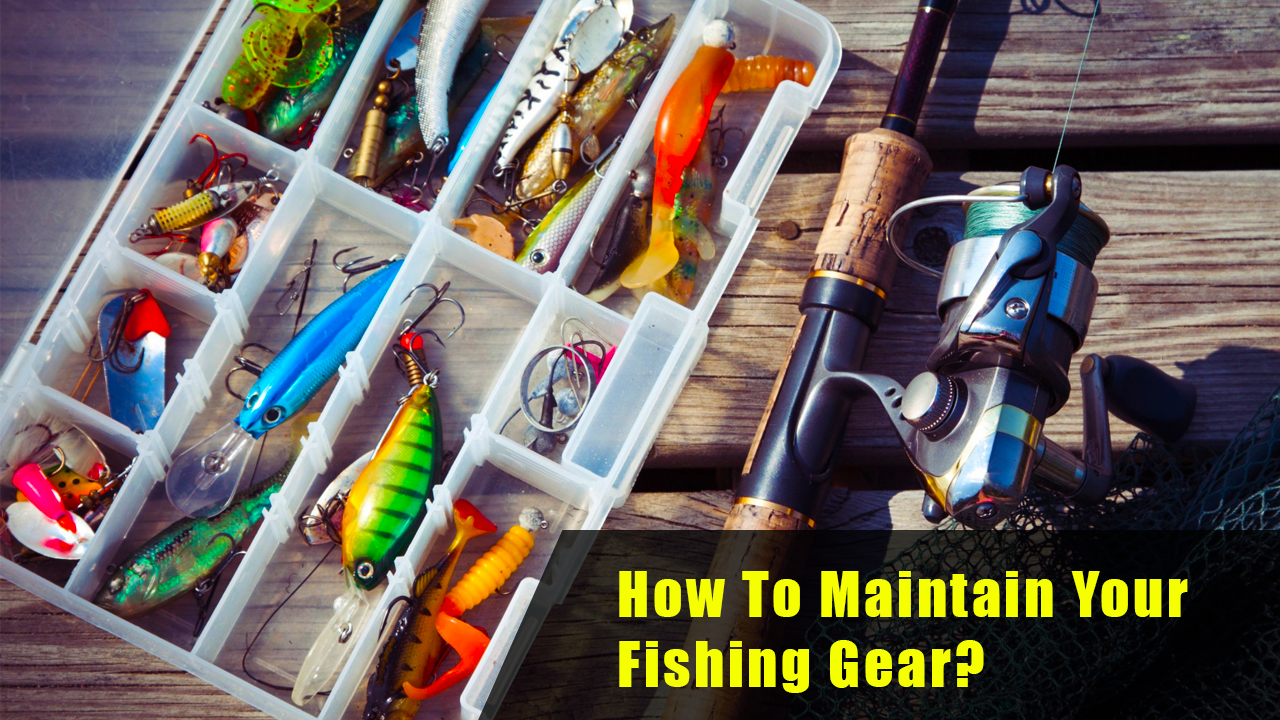
- Post Date: 08 Jun, 2023
Unveiling the Secrets: How to Find the Best Fishing Spot

Introduction:
Finding the best fishing spot can make all the difference between a lackluster fishing trip and a memorable angling adventure. As an angler, understanding the secrets to locating prime fishing locations is crucial. Not only does it increase the likelihood of a successful catch, but it also enhances the overall fishing experience. From unraveling fish behavior and researching local waters to assessing environmental factors and utilizing technology, there are numerous strategies to uncover the perfect fishing spot. In this blog, we will dive deep into these techniques, equipping you with the knowledge and tools to unlock the hidden gems where fish are abundant and waiting to be caught.
Understanding Fish Behavior:
Fish behavior plays a pivotal role in locating the best fishing spot. Different species of fish have unique preferences and tendencies, and being aware of these traits can significantly increase your chances of success. Here are a few key aspects to consider when studying fish behavior:
Types of Fish: Begin by identifying the specific types of fish you intend to catch. Each species has its own habitat preferences and feeding patterns. For example, bass may be found near underwater structures, while trout tend to inhabit cool, fast-flowing streams. By researching the characteristics and tendencies of your target fish, you can narrow down potential fishing locations.
Preferred Habitats: Fish seek out specific habitats that provide suitable conditions for survival and feeding. Some species may prefer shallow, weedy areas, while others thrive in deeper, rocky regions. Factors such as water temperature, depth, vegetation, and oxygen levels influence fish habitat choices. Consulting local fishing guides or experts can provide valuable insights into the preferred habitats of different fish species in your area.
Seasonal Patterns: Fish behavior can change with the seasons. During spawning periods, certain species may migrate to specific areas or exhibit different feeding habits. Understanding these seasonal patterns can help you target fish more effectively. Research local fishing reports or talk to experienced anglers to learn about the seasonal movements and behaviors of your desired fish.
Feeding Habits: Fish are driven by the need to feed, and understanding their feeding habits can lead you to productive fishing spots. Some species are more active during specific times of the day, while others are opportunistic feeders. Pay attention to factors like water temperature, light conditions, and natural prey availability to determine the most productive feeding times for your target fish.
By gaining a comprehensive understanding of fish behavior, you can make informed decisions about where and when to fish. This knowledge will guide you towards the fishing spots that align with the preferences and tendencies of your desired fish species, ultimately increasing your chances of a successful catch.
Researching Local Waters:
Researching local waters is a crucial step in finding the best fishing spot. Understanding the characteristics and nuances of the bodies of water in your area can significantly improve your fishing success. Here are some key aspects to consider when researching local waters:
Fishing Forums and Websites: Online fishing forums and websites dedicated to fishing in your region can be valuable sources of information. These platforms often provide insights from fellow anglers who share their experiences, tips, and recommendations. Engage in discussions, ask questions, and gather information about popular fishing spots, productive techniques, and recent catches.
Local Anglers and Bait/Tackle Shops: Strike up conversations with local anglers and visit nearby bait and tackle shops. These individuals are typically knowledgeable about the area’s fishing hotspots and can provide firsthand information and advice. They may share insights on productive locations, preferred baits, and effective techniques based on their own experiences and interactions with other anglers.
Fishing Reports and Blogs: Stay updated with fishing reports and blogs specific to your region. These reports are often published by local fishing organizations, charter services, or dedicated fishing enthusiasts. They highlight recent fishing trends, successful spots, and notable catches. By regularly checking these resources, you can gain real-time information on where the fish are biting and adjust your fishing plans accordingly.
Social Media Accounts: Follow local fishing enthusiasts, charter companies, and outdoor influencers on social media platforms. They often share their fishing adventures, tips, and location recommendations through posts and stories. This can provide you with valuable insights into popular fishing spots, recent catches, and even visual cues that help you identify potential areas worth exploring.
By conducting thorough research on local waters, you can tap into the collective knowledge and experiences of other anglers. This information will help you uncover the hidden gems and prime fishing spots in your area, increasing your chances of a successful and enjoyable fishing excursion.
Assessing Environmental Factors:
When searching for the best fishing spot, assessing environmental factors is crucial. Understanding the conditions of the water and its surroundings can provide valuable insights into where fish are likely to be located. Here are some key environmental factors to consider:
Water Temperature and Clarity: Fish are sensitive to water temperature. Different species have specific temperature ranges in which they thrive. By monitoring water temperature, either through local reports or using a thermometer, you can identify areas where the water is within the preferred range for your target species. Additionally, water clarity is important as it affects fish behavior. Clear water may require a more stealthy approach, while murky water may necessitate lures with more vibration or scent to attract fish.
Underwater Structures: Pay attention to underwater structures such as rocks, weed beds, submerged vegetation, fallen trees, or man-made structures like piers or docks. Fish are attracted to these structures as they provide shelter, food sources, and ambush points. Casting near or around these structures increases your chances of encountering fish. Use polarized sunglasses or a fish finder to locate and identify underwater structures.
Tides, Currents, and Wind Patterns: Tides and currents can significantly influence fish behavior. Certain species are more active during specific tidal phases. Understanding the tide charts and how they affect your fishing location can help you plan your fishing trips accordingly. Similarly, wind patterns can create areas of increased fish activity. Winds blowing into shorelines or creating current breaks can concentrate baitfish, which, in turn, attracts larger predatory fish.
Oxygen Levels: Fish require adequate oxygen levels to survive. Oxygen-rich areas, such as areas with flowing water or bubbling sources, tend to attract fish. Conversely, stagnant or low-oxygen areas may deter fish. Understanding the oxygen levels in the water can guide you towards areas that are more likely to hold fish.
By assessing these environmental factors, you can narrow down potential fishing spots. Keep in mind that different species have varying preferences, so research the specific environmental requirements of your target fish. By understanding and considering these factors, you increase your chances of finding the best fishing spot and optimizing your fishing success.
Utilizing Technology:
In the quest to find the best fishing spot, technology can be a valuable ally. Various tools and gadgets can provide crucial information and insights that enhance your fishing experience. Here are some key ways to utilize technology:
Fish Finders and Depth Finders: Fish finders use sonar technology to detect underwater structures, fish, and changes in depth. These devices provide real-time feedback on the presence and location of fish, helping you identify productive fishing spots. Depth finders, on the other hand, measure water depth, which is particularly useful for finding drop-offs, channels, or submerged features that attract fish.
Satellite Imagery and Mapping Tools: Utilize satellite imagery and mapping applications to scout potential fishing spots. Platforms like Google Earth or specialized fishing apps allow you to explore bodies of water, identify promising features, and mark potential locations. These tools provide a bird’s-eye view and help you plan your fishing trips more effectively.
Weather Apps and Online Resources: Stay updated with weather conditions and forecasts using weather apps or online resources. Understanding wind direction, barometric pressure, and other weather factors can help you predict fish behavior and choose the most suitable fishing spots. Real-time weather updates enable you to adjust your plans accordingly, maximizing your chances of success.
Mobile Apps and Online Communities: There are numerous mobile apps and online communities dedicated to fishing. These platforms offer a wealth of information, including fishing reports, tips, and community discussions. Engaging with fellow anglers through these apps and communities allows you to tap into the collective knowledge and gain insights about local fishing spots, recent catches, and techniques.
By utilizing technology, you can gather precise information, visualize fishing spots, and make informed decisions. However, it’s important to remember that technology should complement your angling skills and experience, rather than replace them. Use these tools as aids to enhance your fishing knowledge and improve your chances of finding the best fishing spot.
Exploring Multiple Fishing Spots:
Exploring multiple fishing spots is a key strategy for finding the best fishing spot. Casting your line in different locations allows you to maximize your chances of success and uncover hidden gems. Here’s why exploring multiple fishing spots is important:
Trying Different Locations: Not all fishing spots are created equal. By exploring different areas, you expose yourself to a diverse range of fishing environments. Each location has its unique characteristics, including water conditions, underwater structures, and fish populations. By trying different locations, you increase the likelihood of finding spots where fish are more abundant or more likely to bite.
Varying Fishing Techniques: Different fishing spots may require different techniques. Some areas may be more suitable for casting and retrieving, while others may favor trolling or fly fishing. By exploring multiple spots, you can experiment with various techniques and adapt your approach to suit the specific conditions of each location. This allows you to hone your skills and discover what works best in different environments.
Avoiding Overcrowded Spots: Popular fishing spots can often become crowded, especially during peak fishing seasons. By exploring lesser-known or underutilized spots, you can escape the crowds and enjoy a more peaceful and rewarding fishing experience. These spots may offer less competition for fish and allow you to have a more intimate connection with nature.
Keeping a Fishing Log: Keeping a fishing log or journal is a valuable practice when exploring multiple fishing spots. Record details about each spot you visit, including the date, time, weather conditions, bait used, and any notable observations. This log becomes a valuable resource that helps you track your successes, identify patterns, and determine which spots have yielded the best results. Over time, you can refine your fishing strategy and prioritize the spots that consistently produce good catches.
Exploring multiple fishing spots adds excitement and diversity to your angling adventures. It allows you to broaden your fishing knowledge, discover new locations, and increase your chances of finding the best fishing spot for different species and conditions. Remember to embrace the spirit of exploration and be open to new experiences as you venture into various fishing spots.
Safety and Legal Considerations:
When embarking on a fishing trip, ensuring safety and adhering to legal requirements are crucial. Prioritizing safety and following applicable regulations not only protects you and others but also promotes sustainable fishing practices. Here are some key aspects of safety and legal considerations:
Checking Fishing Regulations and Licenses: Before you start fishing, familiarize yourself with the fishing regulations specific to your location. These regulations include information about catch limits, size restrictions, protected species, and fishing seasons. Ensure you have the necessary fishing licenses or permits as required by local authorities. Following these regulations promotes responsible angling and conservation efforts.
Ensuring Safe Access and Equipment: Safety begins with adequate preparation. Ensure you have appropriate fishing equipment in good working condition. Check your fishing rods, lines, hooks, and other gear for any signs of wear or damage. Additionally, verify that you have essential safety equipment on board, such as life jackets, first aid kits, and emergency communication devices. Pay attention to your surroundings and ensure safe access to fishing spots, especially when dealing with slippery or uneven terrains.
Being Aware of Potential Hazards: Fishing environments can present various hazards. Stay vigilant and aware of potential dangers such as strong currents, underwater obstructions, sharp objects, or inclement weather conditions. Take necessary precautions to mitigate risks, such as wearing appropriate footwear, staying away from restricted areas, and checking weather forecasts before heading out.
Respecting Wildlife and the Environment: Practice ethical fishing by respecting wildlife and the environment. Avoid littering and dispose of any trash properly. Handle caught fish with care and release undersized or protected species responsibly. Minimize your impact on the ecosystem by following catch-and-release guidelines and avoiding destructive fishing practices that harm the environment.
Prioritizing safety and complying with legal requirements not only ensures a safe and responsible fishing experience but also contributes to the long-term sustainability of fish populations and their habitats. By being knowledgeable about regulations, prepared with appropriate safety measures, and practicing ethical fishing, you can enjoy your angling pursuits while promoting the well-being of both nature and fellow anglers.
Conclusion
Finding the best fishing spot requires a combination of knowledge, exploration, and respect for the environment. By understanding fish behavior, researching local waters, assessing environmental factors, utilizing technology, and considering safety and legal considerations, anglers can increase their chances of a successful and enjoyable fishing experience. It is essential to adapt to different locations, techniques, and regulations, while also prioritizing safety and conservation. By embracing these principles, anglers can not only find the best fishing spots but also contribute to the sustainability of fish populations and the preservation of our natural resources for future generations of anglers to enjoy.
Introduction: Welcome, fellow anglers! Grab your fishing rods and get ready for a delightful dive into the whimsical world of fishing …
Introduction: In our hectic and demanding lives, stress has become an all-too-common companion. The continual pressures of our jobs, relationships, and …
Introduction Are you tired of your kids being glued to their screens all day? Looking for a way to get them …
Summer is the perfect time for fishing. With the warmer weather, you can enjoy spending time outdoors and taking advantage …
Fishing gear is essential for any angler, and proper maintenance is crucial for ensuring its longevity and performance. Neglecting to …
History of Fishing in Tamil Nadu: Fishing has been a significant part of the culture and economy of Tamil Nadu for …

